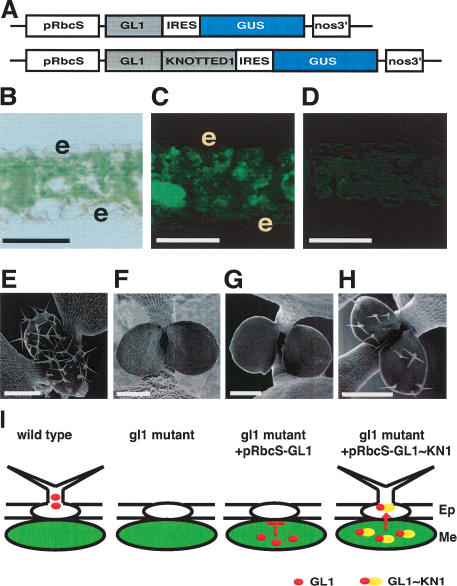Figure 1.
Functional protein trafficking assay using trichome rescue reveals that KN1 fusion to GL1 provides a gain-of-trafficking function. (A) GL1 fusion constructs used for trichome rescue assay. Constructs include the mesophyll-specific RbcS promoter (pRbcS), GL1 or GL1∼KN1 fusions, an internal ribosome entry sequence (IRES) upstream of the GUS coding sequence, and the nopaline synthase (nos) 3′ terminator. (B) Leaf cross-section viewed in bright-field, with epidermal cells labeled “e”. (C) GUS activity was imaged as green fluorescence in mesophyll cells (Immagen Green) in gl1/pRbcS::GL1–IRES–GUS plants. The gl1 background control (D) shows no staining. (E–H) SEM images of wild-type seedling (E), gl1 mutant seedling (F), gl1 seedling carrying the control pRbcS::GL1–IRES–GUS transgene (no trichome rescue) (G), and a gl1 seedling expressing GL1∼KN1 showing trichome rescue (H). (I) Schematic of the functional trafficking assay; in the wild type, GL1 functions in an epidermal precursor cell to initiate trichome formation. GL1 expressed in mesophyll cells is cell-autonomous and cannot rescue trichomes in the gl1 mutant. The KN1 fusion to GL1 can traffic into epidermal cells and rescue trichome formation in the gl1 mutant. (Ep) Epidermal cells; (Me) mesophyll cells. Bars: (B–D), 50 μm; (E–H) 100 μm.

